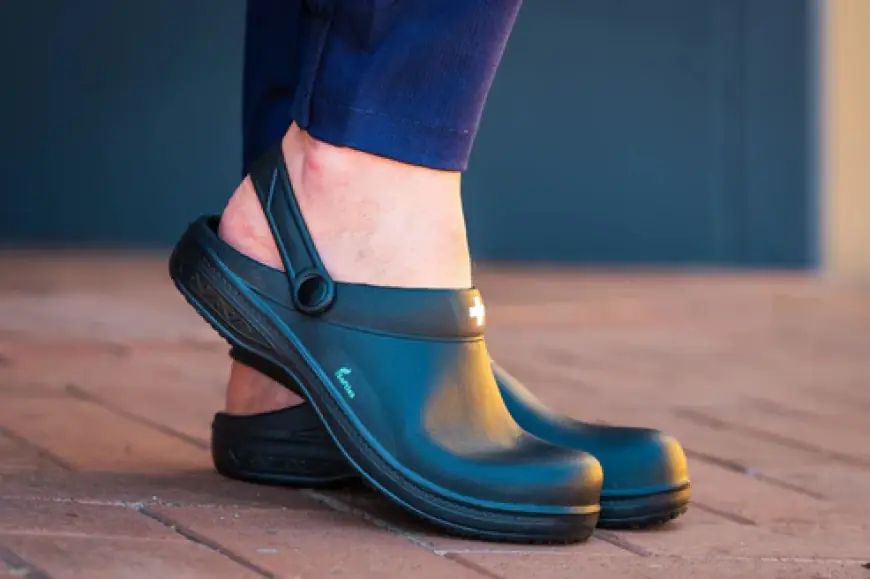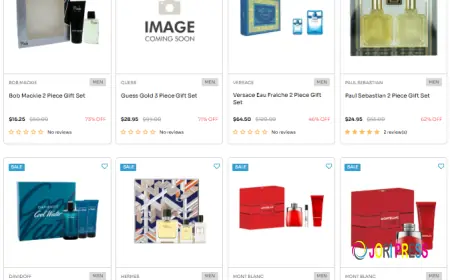5 Things to Know Before Buying Nursing Shoes in Australia
One of the most important features of any nursing shoe is proper support. Nurses in Australia often walk more than 10,000 steps during a shift, placing tremendous strain on their feet, knees, and lower back.

Nursing is one of the most physically demanding professions, requiring long hours on your feet and constant movement. In Australia, nurses often work 8- to 12-hour shifts in fast-paced clinical environments, which makes the right footwear not just a preference but a necessity. Choosing the best nursing shoes AU nurses can rely on means understanding both comfort and occupational requirements. This blog explores five key things every Australian nurse should consider before buying nursing shoes.
1. Understand Workplace Requirements and Policies
Before purchasing nursing shoes, it’s important to check your hospital or healthcare facility’s footwear guidelines. Many Australian hospitals have strict dress codes to ensure hygiene and safety. Shoes may need to be:
-
Closed-toe and closed-heel
-
Slip-resistant
-
Easy to clean (often a requirement in high-risk environments)
-
White or neutral in colour (though this varies)
For example, NSW Health Services outlines specific uniform and appearance standards for nurses, which include guidance on appropriate footwear. Not following these standards could result in being asked to replace your shoes, potentially wasting both time and money. Always align your purchase with your employer’s expectations.
2. Prioritise Arch Support and Cushioning
One of the most important features of any nursing shoe is proper support. Nurses in Australia often walk more than 10,000 steps during a shift, placing tremendous strain on their feet, knees, and lower back.
When selecting nursing shoes, AU medical professionals trust, look for:
-
Orthotic-grade arch support: Helps distribute weight evenly and reduces fatigue.
-
Shock-absorbing midsoles: Essential for long shifts on hard floors.
-
Memory foam or gel inserts: These provide additional comfort and minimise pressure points.
Brands such as Asics, Hoka, and Dansko have been popular among Australian nurses due to their focus on ergonomic design and support.
3. Invest in Slip-Resistant Soles
Slip resistance is a non-negotiable feature when it comes to nursing shoes. Hospitals and aged care facilities often have polished floors that can become slippery due to spills or cleaning. According to Safe Work Australia, slips, trips, and falls are a leading cause of workplace injuries in the healthcare sector.
Make sure your nursing shoes include:
-
Textured rubber outsoles
-
Oil- and water-resistant grip
-
Tread patterns designed for hospital floors
Shoes with the Australian Standard AS 2210.3 certification for occupational footwear are typically a safer bet when it comes to slip-resistance.
4. Choose Breathable and Lightweight Materials
Comfort goes beyond cushioning and support. The materials used in your nursing shoes significantly affect your comfort level, especially in Australia’s warmer climates. Breathability and weight can make the difference between a good day and a painful one.
Consider the following when shopping:
-
Mesh uppers: Offer better ventilation, ideal for nurses in regions like Queensland or Northern NSW.
-
Lightweight EVA foam soles: Reduce overall weight and are easier on joints.
-
Moisture-wicking linings: Help prevent odours and bacterial build-up.
Some nurses opt for clogs or hybrid sneakers made from antimicrobial materials to further enhance hygiene and reduce fatigue.
5. Know When to Replace Your Nursing Shoes
Even the best nursing shoes will wear out, and continuing to use them past their prime can lead to chronic pain or injuries. Most podiatrists recommend replacing work shoes every 6 to 12 months, depending on use and wear.
Here are signs it’s time to replace your nursing shoes:
-
Flattened insoles or loss of arch support
-
Visible tread wear or uneven sole
-
Heel slippage or reduced grip
-
Persistent foot, knee, or back pain
It’s a good idea to rotate between two pairs if your budget allows, which can extend the lifespan of each and reduce wear from daily use.
Conclusion
Choosing the right nursing shoes in Australia is more than a style decision — it’s about performance, health, and safety. By understanding your workplace’s dress code, prioritising support and slip-resistance, opting for breathable materials, and knowing when to replace your shoes, you can ensure all-day comfort and reduce the risk of injuries. Whether you're a student nurse, a newly registered professional, or a seasoned veteran in the Australian healthcare system, investing in high-quality footwear is one of the most important decisions you can make for your career. And once you’ve found your perfect pair of nursing shoes AU healthcare workers swear by, why not complete your look with some fun scrub tops to add personality to your uniform while staying within dress code? Let your feet — and your scrubs — do the talking.
What's Your Reaction?
 Like
0
Like
0
 Dislike
0
Dislike
0
 Love
0
Love
0
 Funny
0
Funny
0
 Angry
0
Angry
0
 Sad
0
Sad
0
 Wow
0
Wow
0

















































